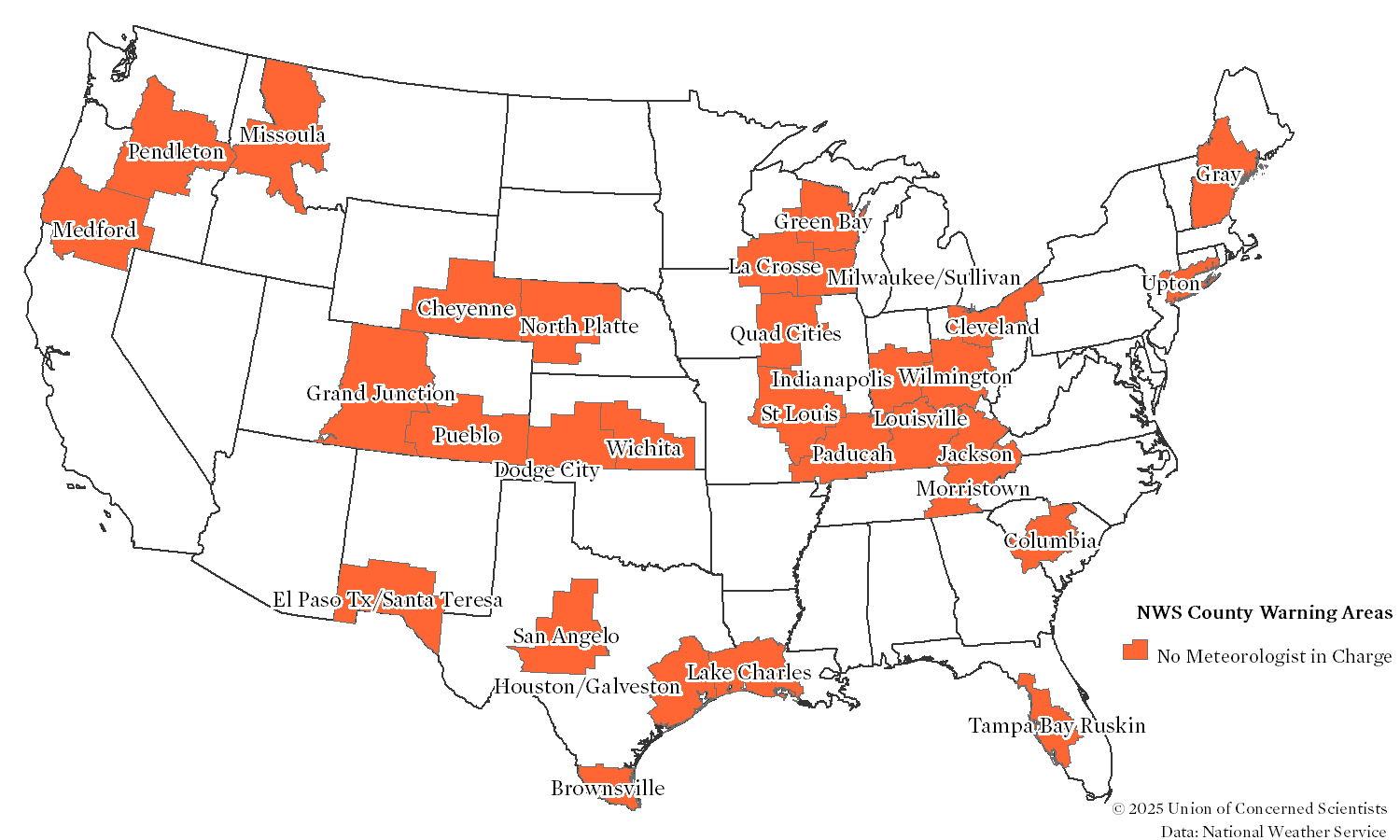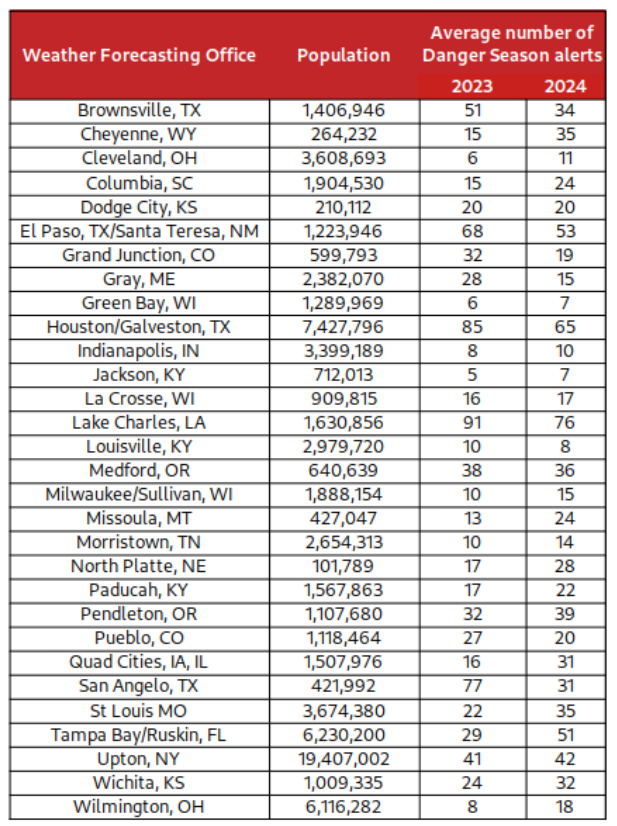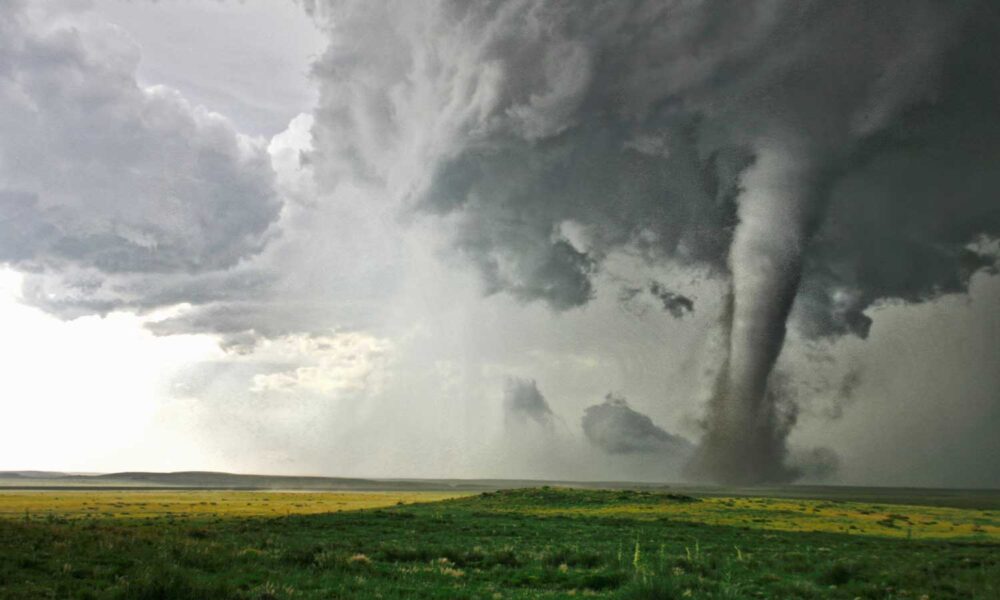Editor’s note: Corrected to state that meteorologists in charge (MICs) were forced out by the Trump administration. An earlier version of the story said the meteorologists were fired.
Imagine it’s June and a tropical depression has formed in the Atlantic Ocean. Over the course of a few days, it develops into a tropical storm over the Caribbean Sea, threatening coastal communities along the Gulf of Mexico.
The tropical storm then travels over warmer-than-usual Gulf waters, where it undergoes a rapid intensification cycle (or two), jumping to a Category 3 or 4 storm overnight. Ferocious wind speeds and catastrophic storm surge threaten homes and people across the Gulf. Communities in the hurricane’s path need to evacuate to safety, but reliable projections and forecasts of storm surge, precipitation, wind and storm movement speed, as well as estimates on where the storm will likely make landfall, aren’t available.
First responders, emergency managers, regional authorities, businesses, and residential communities no longer have the critical information they need to protect vital infrastructure and safely evacuate people in harm’s way. It’s unavailable because of firings, downsizing, grounding of hurricane hunters and weather balloons, and shuttering computational infrastructure and data services at the National Weather Service (NWS), all of which is creating a void of life-saving information during the time of the year when climate change is making summers ever more dangerous and deadly.
These dire circumstances have not yet come to pass, but the Trump administration’s extensive and ongoing attacks on science, including further cuts to the National Oceanic and Atmospheric Administration (NOAA) threatened in the President’s skinny budget, make it a likely scenario during this year’s Danger Season.
Danger Season runs yearly from May through October and is a time when extreme weather events, made worse each year by climate change, are at their peak in the US and increasingly likely to collide. But this year, on top of weather and climate dangers, we have the added risk of not having the best possible science that can warn and protect us from extreme weather events, due to the decimation underway of staff and resources at NOAA and the NWS.
Five former NWS directors have sounded the alarm about how dangerous this could be for the lives of people across the country. And as I wrote before these ill-advised cuts started, a strong and independent NOAA is essential to keep us safe from extreme weather and climate change. In this post, I examine how President Trump’s cuts are degrading extreme weather science and our ability to stay safe in a world made increasingly dangerous by ongoing fossil fuel use and climate change.
1. Grounded weather balloons degrade weather forecasts
The NWS relies on many different tools to monitor weather conditions, including sophisticated technology like Doppler radar, satellites, aircraft reports, and automated surface observation systems. Despite these advancements, weather balloons equipped with an instrument called a radiosonde remain the most effective method for measuring temperature, wind, relative humidity, and atmospheric pressure at higher altitudes.
Since February 27, 2025, when the first suspension of weather balloon launches at the Kotzebue (AK) weather forecasting office (WFO) was announced, more cancellations of, or reductions in the number of weather balloons have taken place. As of this writing, the WFOs in Riverton (WY), Grand Junction (CO), North Platte (NE), Green Bay (WI), and Gaylord (MI) all have reduced the number of balloons to one per day. Rapid City (SD), Omana (NE), Albany (NY), and the Gray (ME) WFOs have suspended their balloon launches altogether.

And the impact of their absence is not speculative; weather balloon cutbacks have already degraded forecasting. For example, in mid-April while tornado warnings across eastern Nebraska were ultimately issued in time, additional data that can only come from radiosondes could have helped identify the tornado threats sooner.
When there are no additional data collected for rapidly-evolving events such as a tornado outbreak, forecasters may not have enough information to accurately update emergency alerts. In the same instance in Nebraska, staffing shortages limited what are usually multiple balloon launches to just one launch at 3PM, skipping a second one at 7PM.
“We didn’t get to see how the atmosphere had evolved between 3 p.m. and 7 p.m. to understand how did the atmosphere evolve so that now we’re getting tornadoes instead of hail.”
It is a truly frightening situation, and one we fear could play on repeat as the Trump administration carries out its anti-science, pro-fossil fuel agenda.
2. MIC drops (not cool like literal mic drops) leave 78 million people at risk
Meteorologists-in-Charge (MIC) bring senior operational leadership and expertise to the business of weather forecasting at NWS. They do quite a bit—from directing and managing staff, including those issuing weather warnings and providing forecast services, to serving as the main point of contact with local emergency managers before and during severe weather events. MICs make sure the quality of warnings and watches are up to standard. They also control communications between, for example, NOAA’s Storm Prediction Center and local WFOs during severe weather. Just like any other place where experienced senior leadership is valued, their expertise is critical in keeping WFOs running smoothly.
But MICs are dropping across the country, and unlike literal and beloved microphone drops, these do not signal confidence in a great performance. On the contrary, the loss of MICs signals that people across the United States should expect to endure more uncertainty and degradation in the life-saving services that our NWS—paid for with our tax dollars—has provided to the public for decades.

As of early May, 30 out of the 122 WFOs did not have MICs on staff due to many taking early retirement or buyouts forced by the hostile work environment created by the Trump administration. This represents 25% of all WFOs, leaving nearly 78 million people in the 796 counties covered by these WFOs without the experienced leadership of MICs. That’s 23% of the 2021 US population, a number that is expected to increase as the Trump administration continues its scorched-earth approach to dismantling the federal scientific enterprise we all rely on daily whether we realize it or not.

3. Trump administration’s FEMA and HUD cuts are putting people in harm’s way
Reduced weather balloon launchings and fired MICs are just two of the ways the Trump administration’s actions are endangering people as we head into Danger Season. The list is long and growing, as we learn more about the cuts and their implications for extreme weather forecasting.
Degradation of the NWS’ alert and response capacity is making it harder for everyday people to cope with the frequent heat waves, hurricanes, floods, and wildfires that threaten us during Danger Season. And with similarly devastating, illegal, and ill-advised cuts at key agencies and offices such as FEMA and HUD, it will be harder for people to recover after these events or mitigate future risk.
As in previous years, this Danger Season state and local governments will be put under enormous financial pressure as they attempt to respond to increasingly extreme weather. At the household level, the financial precarity caused by disasters will be compounded by market instability sparked by tariffs and other political gamesmanship.
Finally, the President’s “skinny budget” released last week threatens even further devastating cuts not just to NOAA, but to FEMA and HUD as well, which play key roles in helping people deal with climate disasters.
4. Lying about climate change
Meanwhile, the Trump administration is denying and attempting to gaslight the public about the cause of worsening climate extremes through denial and disinformation about extreme weather and climate.
That’s because a key goal of Trump and his Congressional allies is to make the impacts of climate change less visible to the public in order to alleviate pressure on policymakers to curtail the use of fossil fuels and benefit that industry’s profit-making. The administration and the fossil fuel industry are undermining clean energy and resilience-building solutions at the expense of public safety and health.
As we see with the agency cuts, they are apparently willing to do tremendous harm to the American public in service of this goal.
We’re tracking extreme weather alerts—and making the connection to climate change
To keep the public informed about the connection between extreme weather and climate change, for the third year in a row we at UCS are tracking heat, flood, storm, and fire weather alerts issued by the NWS during May through October. In 2023, nearly 100% of the US population faced at least one of these four types of extreme weather, and by the end of the 2024 Danger Season, every single county and equivalent in the US had faced at least one such alert.
This year, we integrated the EPA’s Air Quality Index (AQI) for fine particulates (PM2.5) into our Danger Season tracker tool. Air quality suffers greatly when smoke from wildfires pollute the air, and dangerous fine air particulates can travel long distances, far away from where wildfires burn. You can consult our tool daily to find out if your county is under any of these types of alerts, or if it has an air quality index that has reached a level deemed unhealthy for sensitive groups.
The tool also displays the number of people under extreme weather alerts, the percentage of people who have been under at least one extreme weather alert since May 1, the percentage of extreme heat alerts clearly influenced by climate change (thanks to Climate Central’s Climate Shift Index), and the percentage of people who live in disadvantaged communities under alerts.
We have solutions—but they’re also under attack by the Trump administration
This summer’s Danger Season is setting up to be even more risky and dangerous because of the Trump administration’s attacks on NOAA’s scientific resources that help with forecasting AND on FEMA and HUD programs and budgets for pre- and post-disaster response.
As my colleague Shana Udvardy noted in a recent blogpost, there have been numerous attacks against FEMA in the first 100 days of the Trump administration, including gutting the agency’s staff and cutting popular programs like the Building Resilient Infrastructure and Communities (BRIC) program that help communities become more resilient.
The climate crisis and the affordable housing crisis are also increasingly intersecting, as my colleague Zoe Middleton points out, which is why cuts to staff, budgets and programs at HUD are also going to leave communities—especially those with the fewest resources—at heightened risk.
Congress must step up and do its job to protect communities by:
- Halting attacks, reversing cuts and restoring staff and their functions:
- Reversing the administration’s actions and restoring functions and staff at NOAA, NWS, FEMA, HUD, for example, will help the US government keep people safe during extreme weather and climate events and help recover and rebuild after disaster strikes.
- Boosting investments in resilience:
- Government at all levels should invest further in common sense resilience-building measures that we know are badly needed, like climate-resilient affordable housing and grid resilience (see UCS’ Alicia Race’s sobering photo essay blog on the topic), as well as turning again toward the healthy, safe, and affordable clean energy future that people want. And we should make polluters pay their fair share for putting us in this situation.
- Following the money and holding bad actors accountable:
- Fossil fuel interests are a main source of climate disinformation that deceives about the real causes of climate change. People-centric campaigns such as Summer of Heat on Wall Street are shining a light on their lies and deceit. Many large social media outfits and Big Tech pollute the information ecosystem by amplifying these lies. Both industries must be held accountable for their actions in perpetuating harmful lies.
Danger Season is here. The relentless pace of unabated climate change is making extreme weather worse and more dangerous across the US. The Trump administration’s attacks on federal science are doubling down on the dangerous situation already created by runaway emissions and climate disasters. We need science-based solutions that will keep us safe.
Please contact your members of Congress and urge them to protect NOAA and FEMA from unrelenting attacks from the Trump administration.
Take action here:
Stop the Trump Administration from dismantling FEMA
Protect NOAA: Our Safety in a Climate-Changed World Depends on It
Resources
- Danger Season tracker tool (English): https://dangerseason.ucs.org/?lang=en
- Danger Season tracker tool (Spanish): https://dangerseason.ucs.org/?lang=es
- Danger Season 2024 wrap-up video (English): https://s3.amazonaws.com/UCS_Videos/ds-2024-roundup-english.mp4
- Danger Season 2024 wrap-up video (Spanish): https://s3.amazonaws.com/UCS_Videos/ds-2024-roundup-spanish.mp4
- Danger Season 2023 wrap-up video (English): https://s3.amazonaws.com/UCS_Videos/ds-2023-roundup-english.mp4
- Danger Season 2023 wrap-up video (Spanish): https://s3.amazonaws.com/UCS_Videos/ds-2023-roundup-spanish.mp4

